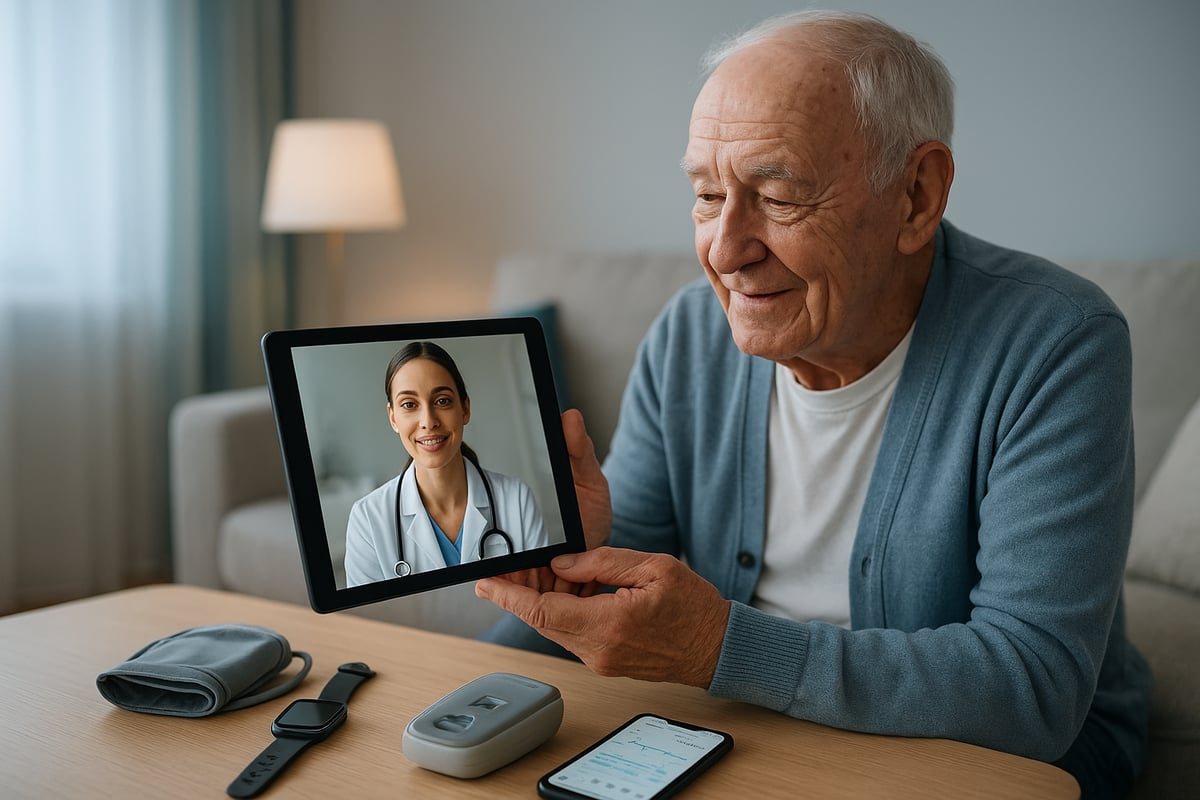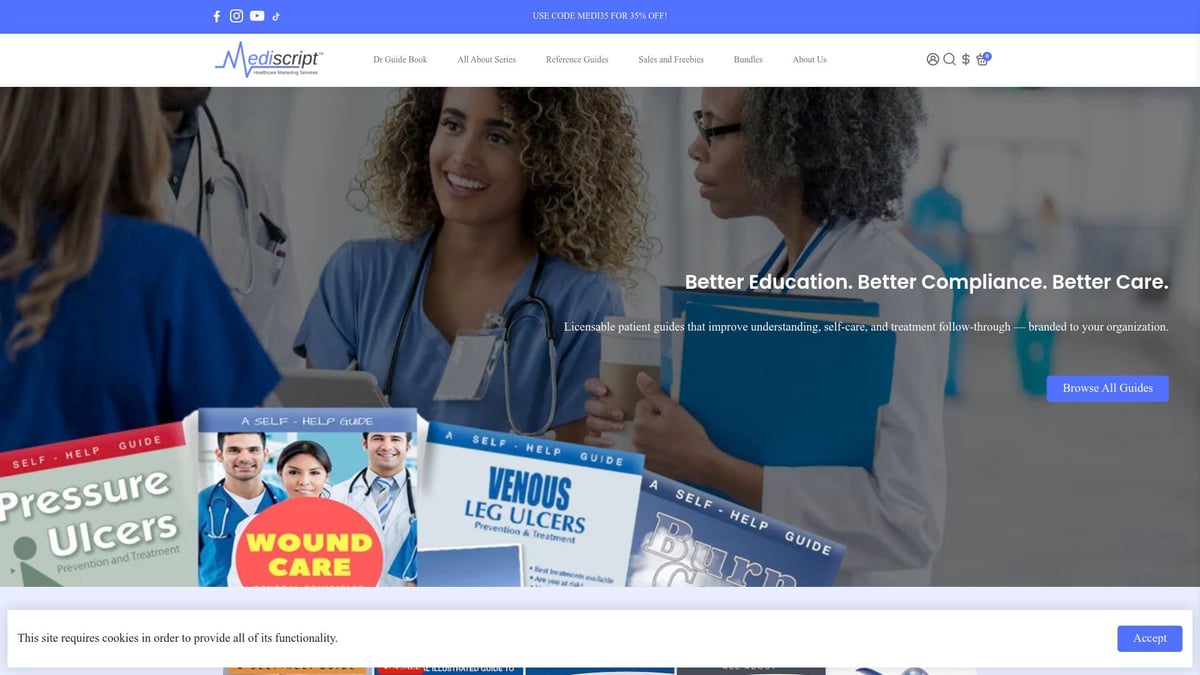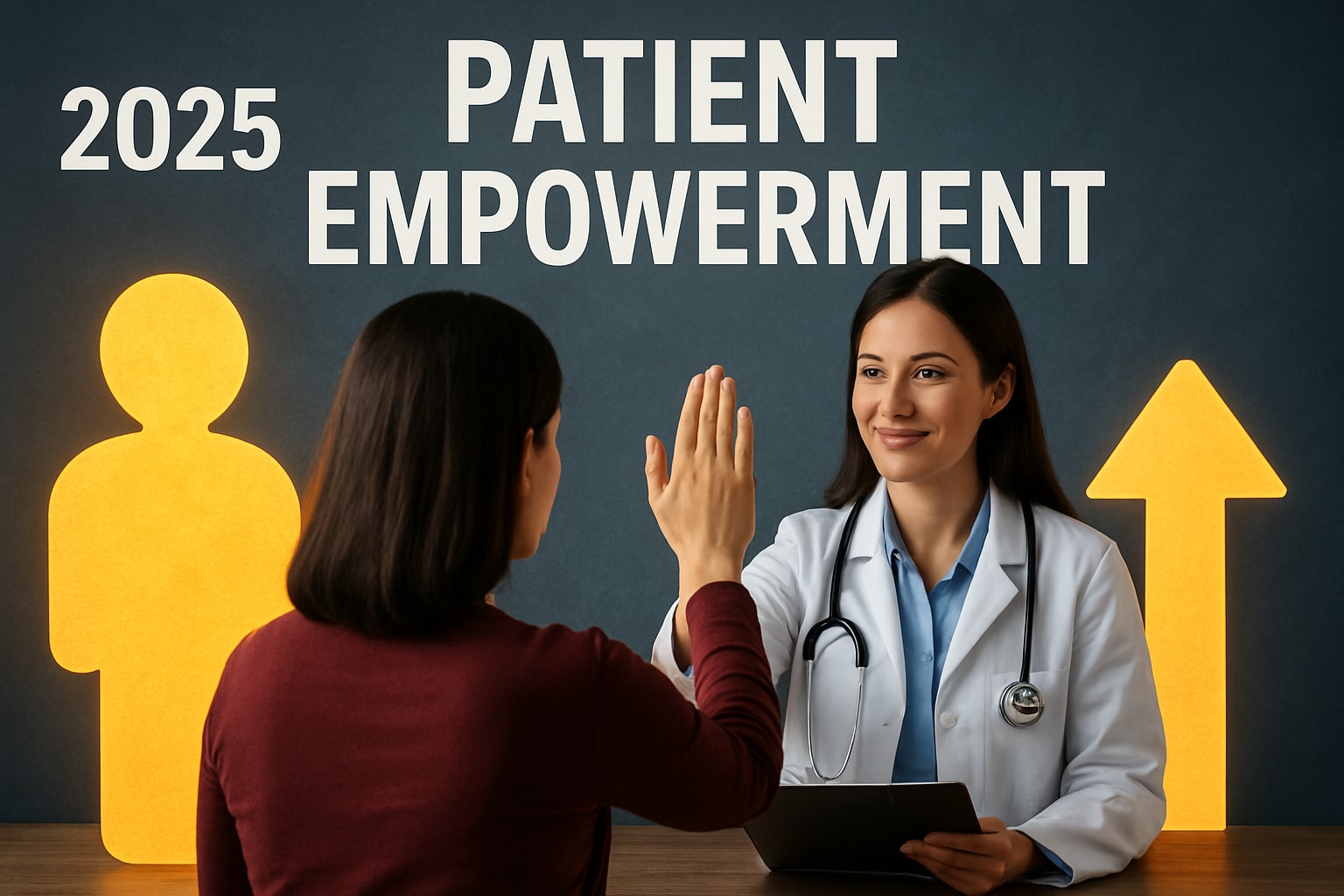In 2025, the landscape of patient take care is more dynamic and vital than ever, shaped by rapidly advancing healthcare systems and growing patient expectations. This essential guide is designed to equip both patients and caregivers with practical, up-to-date strategies to achieve the best possible health outcomes. Throughout this resource, you will explore the core principles of effective patient take care, learn how to harness new technologies, master communication techniques, and discover self-management and support options. With expert-backed advice and a step-by-step approach, you can confidently navigate the complexities of modern care and make informed decisions for your well-being.
Understanding the Foundations of Patient Care
Modern patient take care in 2025 represents a significant shift from old models. Today, the approach is holistic and deeply patient-centered, focusing on individual needs and cultural values. Personalized medicine tailors treatments to each patient’s unique circumstances, promoting better engagement and outcomes. Healthcare systems are now more attentive to cultural competence and sensitivity, ensuring care is respectful and inclusive. For example, shared decision-making processes invite patients to actively participate in their health journey, making care more collaborative and empowering.

The Role of Patients, Caregivers, and Healthcare Teams
In patient take care, collaboration is essential. Healthcare now relies on interdisciplinary teams, bringing together doctors, nurses, therapists, and social workers to address every aspect of a patient’s well-being. Patients are no longer passive recipients but active participants, contributing to their care plans and decisions. Caregivers, whether family or friends, play a crucial role in daily support and advocacy. Notably, 68% of patients report improved outcomes with team-based care (Health Affairs, 2023), highlighting the power of collective expertise. Access to resources like the Patient Care Collection further supports these efforts, providing guidance for both patients and caregivers.
Key Principles: Safety, Dignity, and Communication
Patient take care is anchored in three core principles: safety, dignity, and clear communication. Protecting patient safety means reducing risks and preventing errors at every step. Respecting dignity involves honoring patient autonomy, privacy, and preferences, ensuring individuals feel valued and heard. Open communication is foundational—using techniques like the teach-back method confirms patients fully understand their care instructions. These principles work together to create a supportive environment where patients feel confident and informed during their care experience.
Addressing Health Equity and Accessibility
One of the biggest challenges in patient take care is ensuring everyone receives the support they need. Bridging gaps for underserved populations requires innovative solutions, such as expanding telehealth services. This digital access has led to a 42% increase in telehealth usage among rural patients (CDC, 2024), making care more reachable. Reducing barriers—whether language, mobility, or cost—remains a priority. By continually addressing equity and accessibility, the healthcare system moves closer to providing quality care for all, regardless of background or location.
Step-by-Step Guide to Effective Patient Care Planning
Navigating patient take care in 2025 requires a structured, proactive approach. This guide outlines six key steps to ensure every aspect of care is thoughtfully planned, monitored, and adjusted for the best possible outcomes.

Step 1: Conducting a Comprehensive Assessment
The foundation of patient take care is a thorough assessment. Start by gathering a complete medical history, including previous illnesses, surgeries, allergies, and medications. Ask about current symptoms and daily routines to understand lifestyle factors that may impact health.
Use standardized screening tools to evaluate both physical and mental health. Involve family members or caregivers in this process to get a holistic view of the patient's needs. Their input can reveal challenges the patient might not mention directly.
A well-rounded assessment sets the stage for successful patient take care by identifying risks, strengths, and priorities early on.
Step 2: Setting Realistic and Measurable Goals
Effective patient take care depends on setting clear, achievable goals. Collaborate with the patient to define what matters most to them, whether it is improving mobility, managing pain, or maintaining independence.
Apply the SMART framework—Specific, Measurable, Achievable, Relevant, and Time-bound—when outlining goals. For example, after surgery, you might aim for walking 50 meters unassisted within two weeks.
Align these targets with the patient’s preferences and values. Involving patients in goal-setting increases motivation and ensures that patient take care remains personalized and meaningful.
Step 3: Developing a Tailored Care Plan
A customized care plan is at the heart of patient take care. Integrate input from all members of the healthcare team, including doctors, nurses, therapists, and pharmacists. Each professional brings unique insights to address the patient's multifaceted needs.
Base interventions on the latest evidence and clinical guidelines. For more actionable strategies and examples, refer to the Improving Patient Care Guide which offers practical tips for enhancing patient take care.
Document every element of the care plan and ensure the patient and caregivers understand their roles. This collaborative approach supports better outcomes and patient satisfaction.
Step 4: Coordinating with Healthcare Providers
Patient take care thrives on seamless coordination among healthcare providers. Schedule regular check-ins and follow-up appointments to monitor progress and address issues promptly.
Utilize care coordinators or case managers to streamline communication between different specialists. Share information efficiently through electronic health records (EHRs), ensuring everyone involved is up to date.
Clear coordination prevents gaps in care and reduces the risk of errors, making it a cornerstone of effective patient take care.
Step 5: Implementing and Monitoring the Plan
Once the plan is in place, patient take care requires vigilant implementation and ongoing monitoring. Use digital tools like apps or wearable devices to track symptoms, medication adherence, and vital signs.
Encourage patients and caregivers to maintain daily logs. Adjust the care plan as needs evolve. For chronic diseases, remote monitoring can alert the team to changes before they become critical.
This continuous feedback loop ensures patient take care remains responsive and adaptive, supporting long-term health.
Step 6: Evaluating Outcomes and Making Adjustments
The final step in patient take care is evaluating results and refining the plan. Measure success by comparing outcomes to the original goals. Solicit feedback from both patients and caregivers about what is working and what needs improvement.
Use this information to adapt interventions, set new targets, or involve additional support. Regular evaluation fosters continuous improvement and empowers everyone involved in patient take care to achieve the best possible results.
Integrating Technology and Digital Health Tools
In 2025, integrating technology is transforming patient take care into a seamless, proactive process. Digital health tools are now core components of every care plan, supporting both patients and caregivers with innovation and convenience. This section explores how modern tech is reshaping daily care, improving outcomes, and empowering everyone involved.

The Rise of Telehealth and Virtual Care
Telehealth has become a cornerstone of patient take care, offering unparalleled convenience and access to healthcare professionals. Virtual visits, whether by video, secure chat, or remote monitoring, eliminate travel barriers and help patients receive timely consultations. In fact, telehealth accounted for 23% of outpatient visits in 2024, and recent FAIR Health's Telehealth Tracker Reports highlight ongoing growth and changing trends.
Patients can now schedule appointments, access specialists, and receive follow-up care all from home. This flexibility supports better continuity and satisfaction, especially for those in rural or underserved communities.
Wearables and Health Tracking Devices
Wearable technology is revolutionizing patient take care by enabling real-time monitoring of vital signs and health trends. Devices such as smartwatches, glucose monitors, and blood pressure cuffs continuously collect data, alerting both patients and providers to potential issues.
For example, wearable ECGs can detect arrhythmias early, prompting timely intervention. These tools encourage patients to stay proactive, track progress, and participate more actively in their own care. The integration of wearables into daily routines makes managing chronic conditions more accessible than ever.
Patient Portals and Electronic Health Records (EHRs)
Patient portals and EHRs are essential for efficient patient take care. With secure access to test results, appointment scheduling, and direct messaging with providers, patients are empowered to manage their health information easily. Statistics show that 87% of large hospitals now offer patient portals, reflecting widespread adoption.
These platforms streamline communication, reduce paperwork, and support informed decision-making. Patients can download visit summaries, track medication lists, and share records with caregivers or specialists, fostering a collaborative approach.
Mobile Apps for Medication, Diet, and Symptom Tracking
Mobile health apps are vital tools for patient take care, helping patients manage medications, track nutrition, and monitor symptoms daily. Top-rated apps send timely medication reminders, log meals, and chart symptoms, promoting adherence and early detection of health changes.
For chronic conditions like diabetes, these apps have been shown to reduce ER visits by supporting day-to-day management. They also enable caregivers to monitor progress and intervene when necessary, improving safety and outcomes for all involved.
Data Security and Privacy Considerations
With the increasing use of digital tools in patient take care, protecting sensitive health information is paramount. Patients should choose platforms that comply with HIPAA and utilize secure data sharing protocols. Understanding privacy policies and patient rights ensures that information remains confidential.
Healthcare organizations are investing in advanced cybersecurity, and patients can further protect themselves by using strong passwords and enabling two-factor authentication. Staying informed about digital safety supports trust and confidence in modern care.
Communication, Advocacy, and Health Literacy
Clear and effective communication is the backbone of patient take care in 2025. Patients, caregivers, and providers must work together to build trust, advocate for needs, and navigate complex health systems. By focusing on these areas, everyone involved can achieve better outcomes and a more positive care experience.
Building Trust with Healthcare Providers
Building trust is essential for effective patient take care. Patients should feel comfortable asking questions and expressing concerns during appointments. Open, honest relationships foster better understanding and compliance.
A helpful strategy is to prepare a question list before visits. This ensures nothing important is missed and encourages active participation. Using tools like question prompt lists can clarify instructions and reduce misunderstandings.
Providers can also use the teach-back method, asking patients to repeat instructions in their own words. This confirms understanding and builds confidence. When trust is established, patients are more likely to follow care plans, leading to improved health outcomes.
Advocating for Patient Needs and Preferences
Self-advocacy is a cornerstone of patient take care, empowering individuals to express their values and preferences. Caregivers also play a vital role in speaking up for loved ones. Strategies include requesting second opinions, seeking specialist referrals, and ensuring all treatment options are discussed.
Patients who advocate for themselves experience higher satisfaction and better results. Tools and resources, such as Patient Empowerment Strategies, can help individuals learn how to communicate effectively and make informed decisions.
Remember, your voice matters in every aspect of care. Advocacy ensures your needs are met and your care remains aligned with your goals.
Enhancing Health Literacy for Better Outcomes
Health literacy is critical for patient take care, helping patients understand medical information and make informed choices. Many people struggle with complex instructions or unfamiliar terms.
To improve health literacy, providers should use plain language and visual aids. The teach-back method is another effective tool, allowing patients to confirm their understanding. Patients should feel comfortable asking for clarification whenever needed.
Improving health literacy leads to better medication adherence, fewer errors, and greater satisfaction. Everyone benefits when information is accessible and clear.
Navigating Complex Healthcare Systems
Today's healthcare systems can be challenging to navigate, making patient take care more complex. Patients and caregivers must manage insurance, billing, appointments, and legal documents.
Tips for success include:
- Keeping organized records of all medical visits and paperwork
- Understanding patient rights regarding coverage and privacy
- Seeking help from case managers or community advocates
Accessing community or government resources can also ease the burden. Knowledge and organization are key to staying on top of healthcare responsibilities.
Mediscript: Trusted Health Education Resources
Mediscript offers evidence-based guides that support patient take care for both patients and caregivers. These resources cover chronic disease management, wound care, and medication safety, making complex topics easier to understand.

Healthcare organizations, clinics, and pharmacies worldwide trust Mediscript for reliable patient education. Guides are customizable and instantly available, helping individuals improve compliance and health outcomes.
Accessible information empowers patients and caregivers to manage daily care with confidence and clarity.
Self-Management and Daily Patient Care Best Practices
Taking charge of daily health routines is essential for anyone striving for better outcomes in patient take care. By focusing on medication, nutrition, hygiene, mobility, and mental health, patients and caregivers can actively support recovery, independence, and quality of life.
Medication Management and Adherence
Effective medication management is a cornerstone of patient take care. Patients should keep an up-to-date medication list, use pill organizers, and set phone or app reminders for doses. Always review instructions with your healthcare provider, especially when prescriptions change.
- Use a table or chart to track medication schedules.
- Ask about possible side effects and drug interactions.
- Perform medication reconciliation after every hospital visit.
If you notice side effects or miss a dose, communicate promptly with your care team. Involving family or caregivers can add an extra layer of safety and support for patient take care.
Nutrition and Hydration Strategies
Proper nutrition and hydration are vital in patient take care, impacting healing, energy, and immune strength. Start with a balanced diet tailored to medical needs; consult a dietitian if possible. Monitor fluid intake, especially for those with kidney or heart conditions.
- Prepare meals in advance to maintain consistency.
- Use water bottles with measurements to track intake.
- Include protein, fiber, and key vitamins in daily meals.
Malnutrition affects 30 percent of hospitalized patients, highlighting the need for early intervention. Small, frequent meals and easy-to-digest foods can make a difference in patient take care.
Personal Hygiene and Infection Prevention
Maintaining daily hygiene routines is non-negotiable in patient take care. Focus on handwashing before meals and after restroom use, regular bathing, oral care, and wound management. Clean assistive devices and high-touch surfaces often.
- Wash hands with soap for at least 20 seconds.
- Change wound dressings as directed.
- Use separate towels for each person.
For more detailed guidance, explore Home Health and Wound Care, which offers practical advice for safe home routines. Good hygiene is an essential defense in patient take care.
Mobility, Exercise, and Physical Therapy
Staying active is a key pillar of patient take care, reducing complications like blood clots and pressure sores. Follow your provider’s exercise plan, focusing on safe, gradual progress. Use mobility aids as prescribed.
- Set daily movement goals, like short walks.
- Practice balance exercises to prevent falls.
- Track physical activity with a journal or app.
Home-based exercise programs can speed up recovery after surgery or illness. Consistency is crucial for long-term success in patient take care.
Managing Emotional and Mental Well-being
Emotional health is just as important as physical health in patient take care. Recognize signs of stress, anxiety, or depression early. Use relaxation techniques like deep breathing, guided imagery, or mindfulness.
- Join support groups for shared experiences.
- Schedule regular check-ins with mental health providers.
- Keep a journal to track moods and triggers.
Accessing professional counseling or peer support can ease emotional burdens. Prioritizing mental wellness builds resilience and enhances patient take care every day.
Accessing Support Systems and Community Resources
Connecting with the right support systems is vital for successful patient take care in 2025. Whether you rely on family, professionals, or community resources, building a strong network can help you navigate challenges, manage stress, and improve health outcomes.
Family, Friends, and Informal Caregivers
A dependable network of family and friends forms the backbone of effective patient take care. Open communication about needs, expectations, and boundaries helps prevent caregiver burnout and ensures everyone shares responsibilities fairly.
- Hold regular family meetings to coordinate schedules.
- Use shared calendars or apps to organize tasks and appointments.
- Rotate caregiving duties among available members to distribute the workload.
By involving loved ones in patient take care, patients benefit from emotional support, practical assistance, and a sense of community, making daily challenges more manageable.
Professional Support Services
For many, professional support services are essential in patient take care. Home health aides, visiting nurses, and therapists provide expert care, allowing patients to recover or manage chronic conditions safely at home.
Knowing when to seek professional help is crucial. Look for signs like increased care needs, safety concerns, or caregiver fatigue. When choosing providers, verify credentials, reviews, and compatibility with your care goals.
Data shows that 60% of elderly patients experience improved outcomes with home care services, reinforcing the value of professional involvement in patient take care.
Community and Online Resources
Community and online resources expand the reach of patient take care beyond the home. Local support groups, disease-specific organizations, and helplines offer guidance, education, and peer support.
Online forums and virtual support communities are increasingly popular, especially for individuals in rural or underserved areas. According to the CDC National Health Statistics Report, telemedicine and digital engagement continue to bridge access gaps, making patient take care more inclusive.
For example, virtual caregiver groups for dementia provide real-time advice, emotional support, and practical tips, fostering resilience and connection.
Financial and Legal Assistance
Managing the financial and legal aspects of patient take care is equally important. Navigating insurance coverage, disability benefits, and government aid can be complex but necessary for long-term stability.
Consider these steps:
- Review insurance plans regularly.
- Consult with social workers or patient advocates for assistance.
- Prepare legal documents like advance directives or power of attorney.
Nonprofit organizations and advocacy groups also offer resources to help patients and caregivers stay informed and empowered throughout the patient take care journey.





